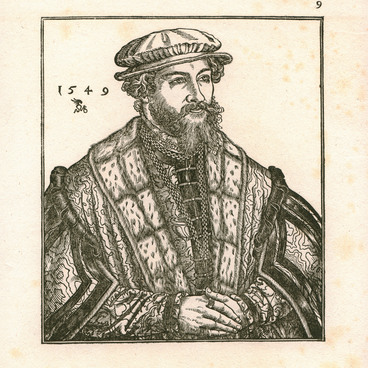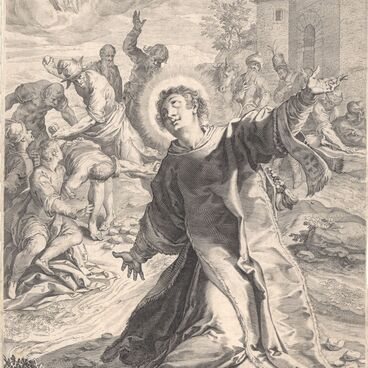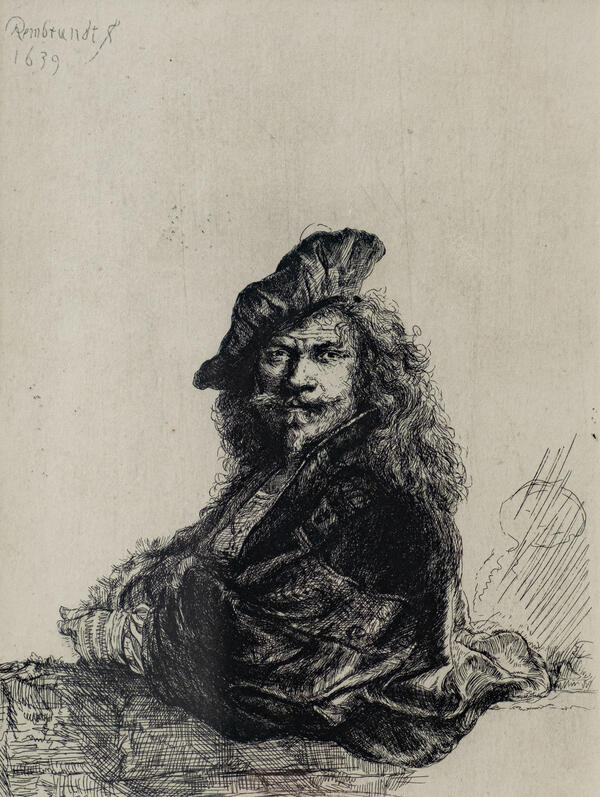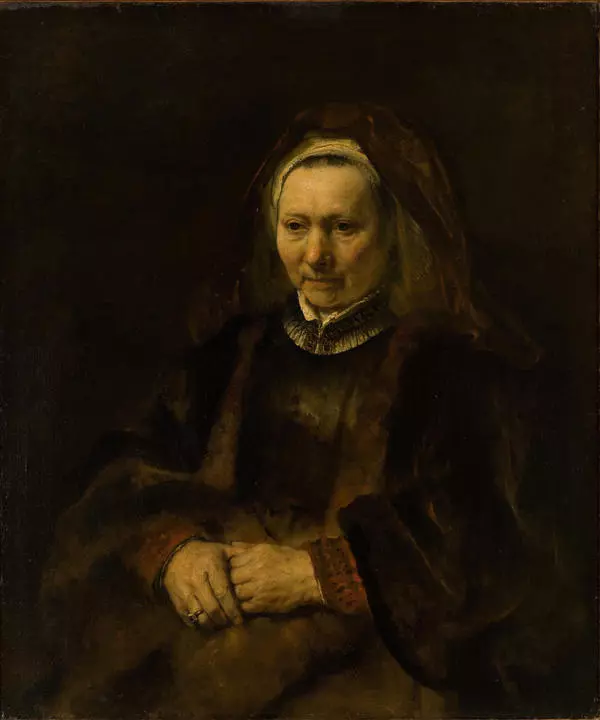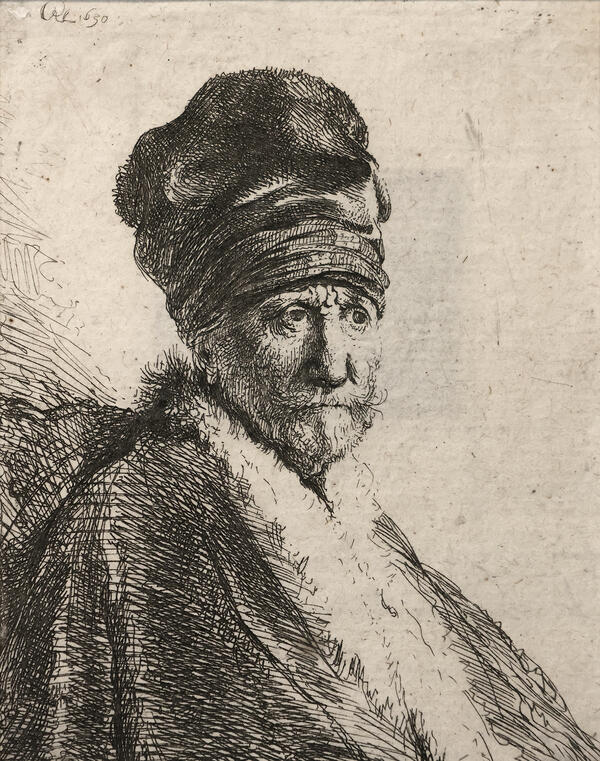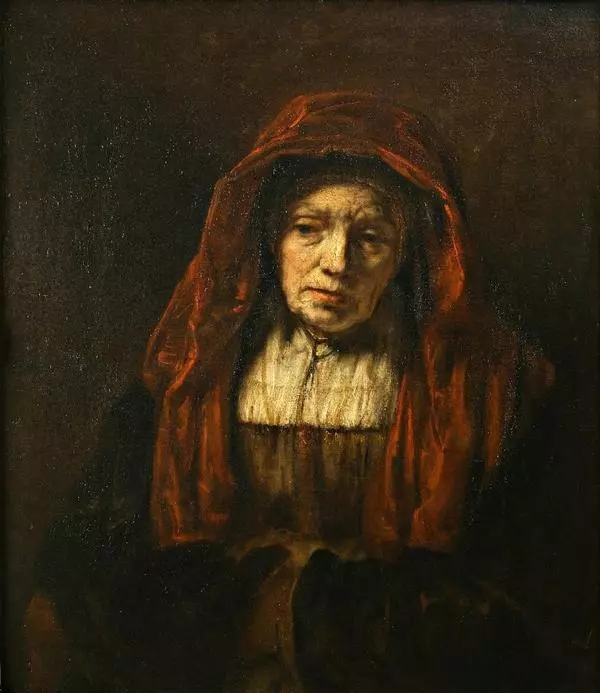The etching Deposition from the Cross was created by Dutch artist Rembrandt in his early period of creative work. He had just moved from Leiden to Amsterdam and was still developing his manner. In 1632 Rembrandt received a large commission from Frederick Hendrick, the Prince of Orange, for two paintings on the subject of the Passion of Christ: The Exaltation of the Holy Cross and The Deposition from the Holy Cross. The Protestant Prince wanted to get the paintings for his private chambers where he could pray all by himself. Rembrandt completed the canvases in 1633.
Deposition from the Cross
Время создания
1633
Размер
52,4x40,5 cm
Техника
paper, etching
Коллекция
#3
Rembrandt
Deposition from the Cross
#2
#5
Deposition from the Cross, the original painting, img via: commons.wikimedia.org
At the same time the artist created the etching based on the original painting. In the etching the subject is the mirror image of that in the painting, some details are missing. The main group of characters is depicted larger and closer to the foreground. Rembrandt added a critical detail to the etching: a powerful beam that illuminates the Christ’s body and the people who deposit him from the cross. The remaining part of the scene is withdrawn into darkness, loses its accents and becomes insignificant.
#6
The body of Christ is emaciated and tormented, his arms and legs are twisted, his posture expresses suffering. Rembrandt painted himself standing on the ladder. The body of Christ is emaciated and tormented, his arms and legs are twisted, his posture expresses suffering. Rembrandt painted himself standing on the ladder.
Among the characters, Rembrandt distinguished Joseph of Arimathea, a member of Sanhedrin and a secret disciple of Jesus, who successfully obtained from Pontius Pilate the permission to dispose the body of his teacher from the cross and bury it. Together with Nicodemus, Joseph brought the shroud: a cut of linen cloth to wrap the body, and also aloe and myrrh for embalming.
None of the canonical Gospels contains an account of the deposition from the Holy Cross, therefore artists had to assume the subject. In the fine arts of the late period of the Spanish Netherlands, the interpretation of the subject became more liberal. Among helpers to Joseph and Nicodemus, an apocryphous character, Rembrandt depicted two unknown persons. Beneath the cross, Rembrandt showed the three Maries: kneeling Magdalene, Virgin Mary and Mary of Cleophas, a sister of Virgin Mary. St. John is supporting the body chuted down the cloth sheet.
#8
Rembrandt practiced engraving throughout all his creative life: from 1626 through 1665; outside of the Netherlands he was known as an engraver. He preferred the technique of etching, ant only few could duplicate his practices. Significant stylistic differences with etchings of his contemporaries allow scholars to assume that Rembrandt was self-taught. He used his chisel more liberally than others, often made his lines irregular, added the dry needle technique and repeated etching treatment, which provided more light to his etchings and made them look like paintings. Nonetheless, despite his casual strokes, the etchings by Rembrandt are realistic.
Rembrandt created around 300 etchings, 80 copper plates survived till our days, the rest reached us in the form of prints. Rembrandt took good care of his plates and did not make many prints, therefore no museum in the world has a complete collection of prints of the Dutch Master.
Rembrandt created around 300 etchings, 80 copper plates survived till our days, the rest reached us in the form of prints. Rembrandt took good care of his plates and did not make many prints, therefore no museum in the world has a complete collection of prints of the Dutch Master.
#9
Irbit State Museum of Fine Arts
читать дальшескрыть
00:00
00:00
1x
Deposition from the Cross
Время создания
1633
Размер
52,4x40,5 cm
Техника
paper, etching
Коллекция
Открыть в приложении
Поделиться



